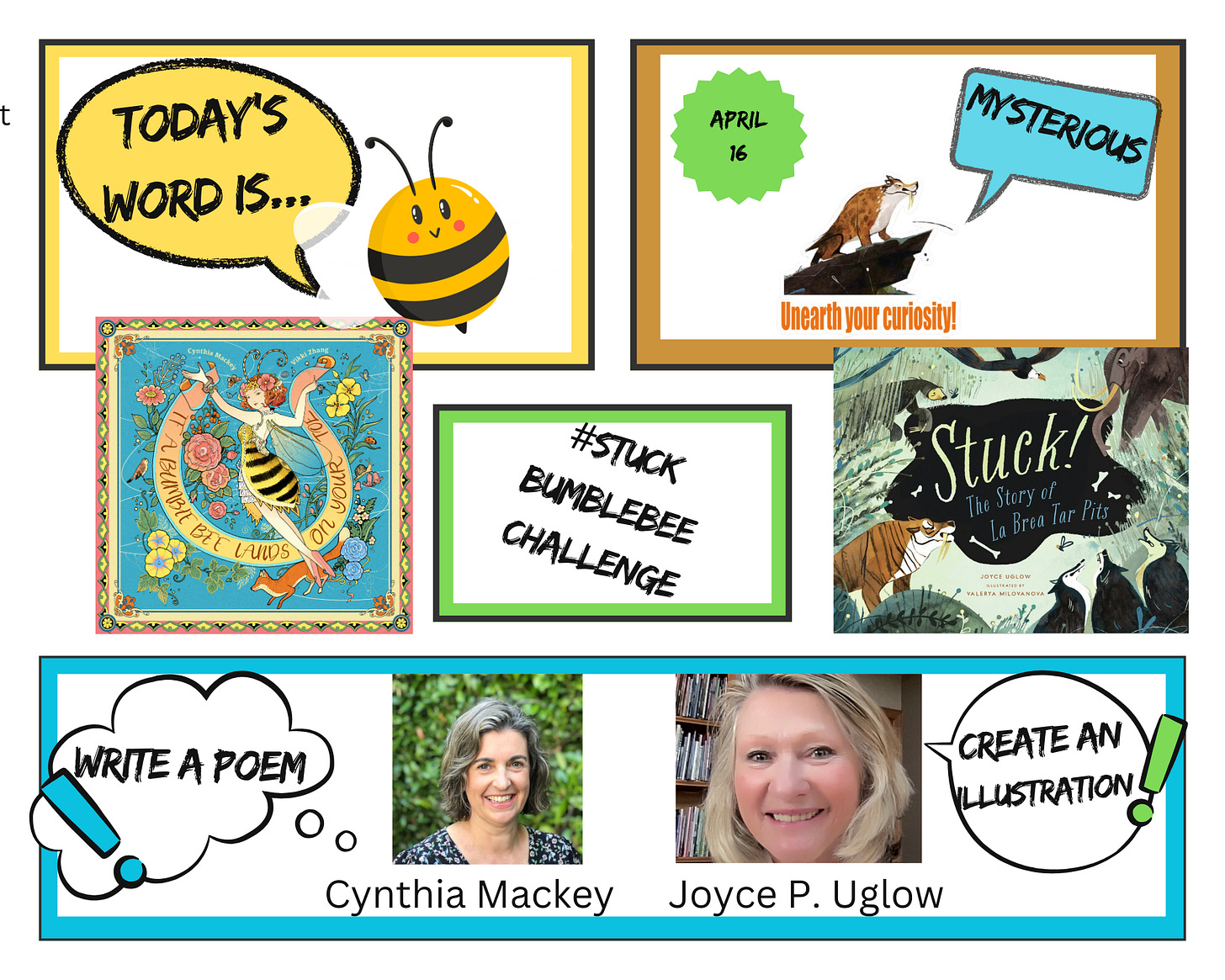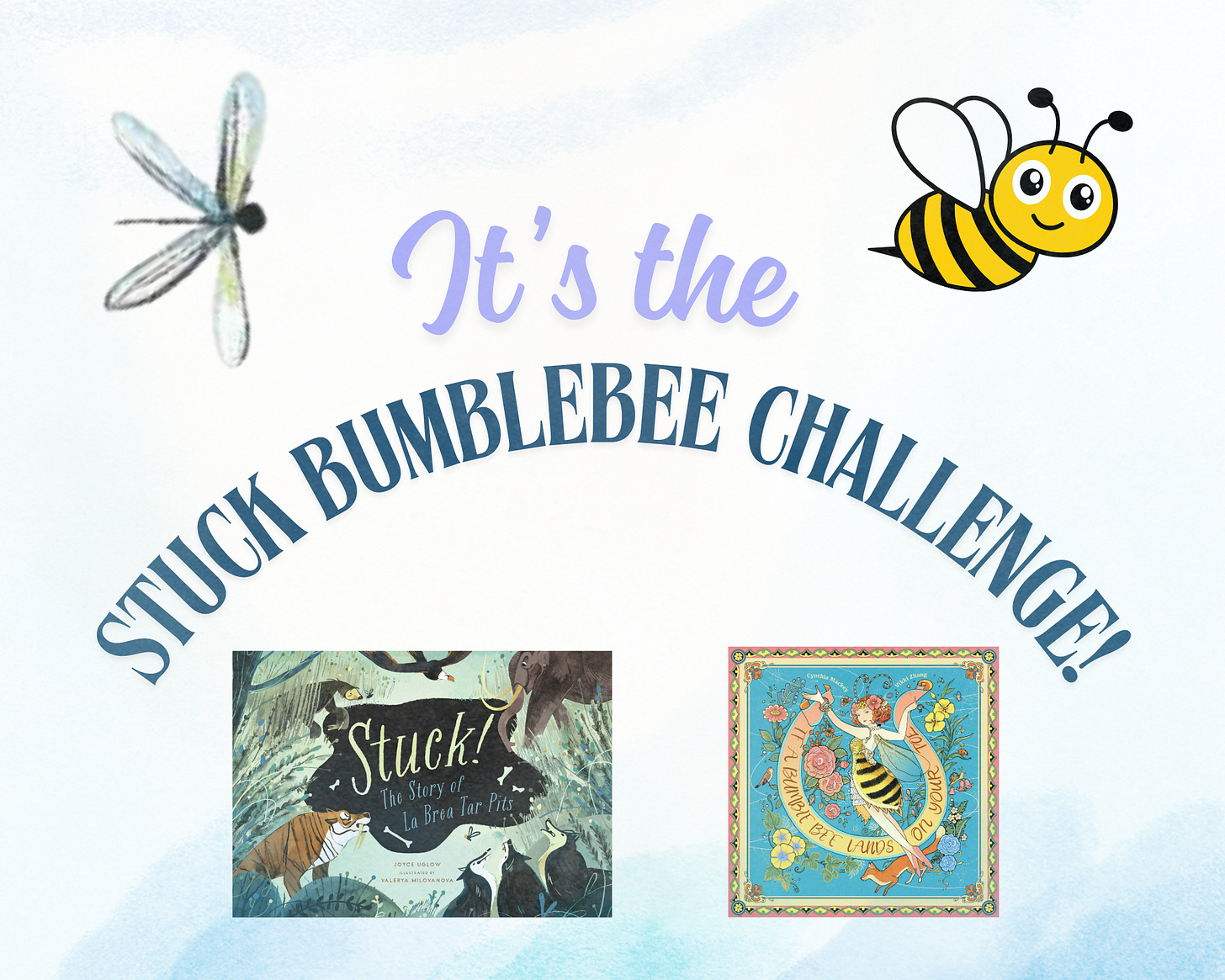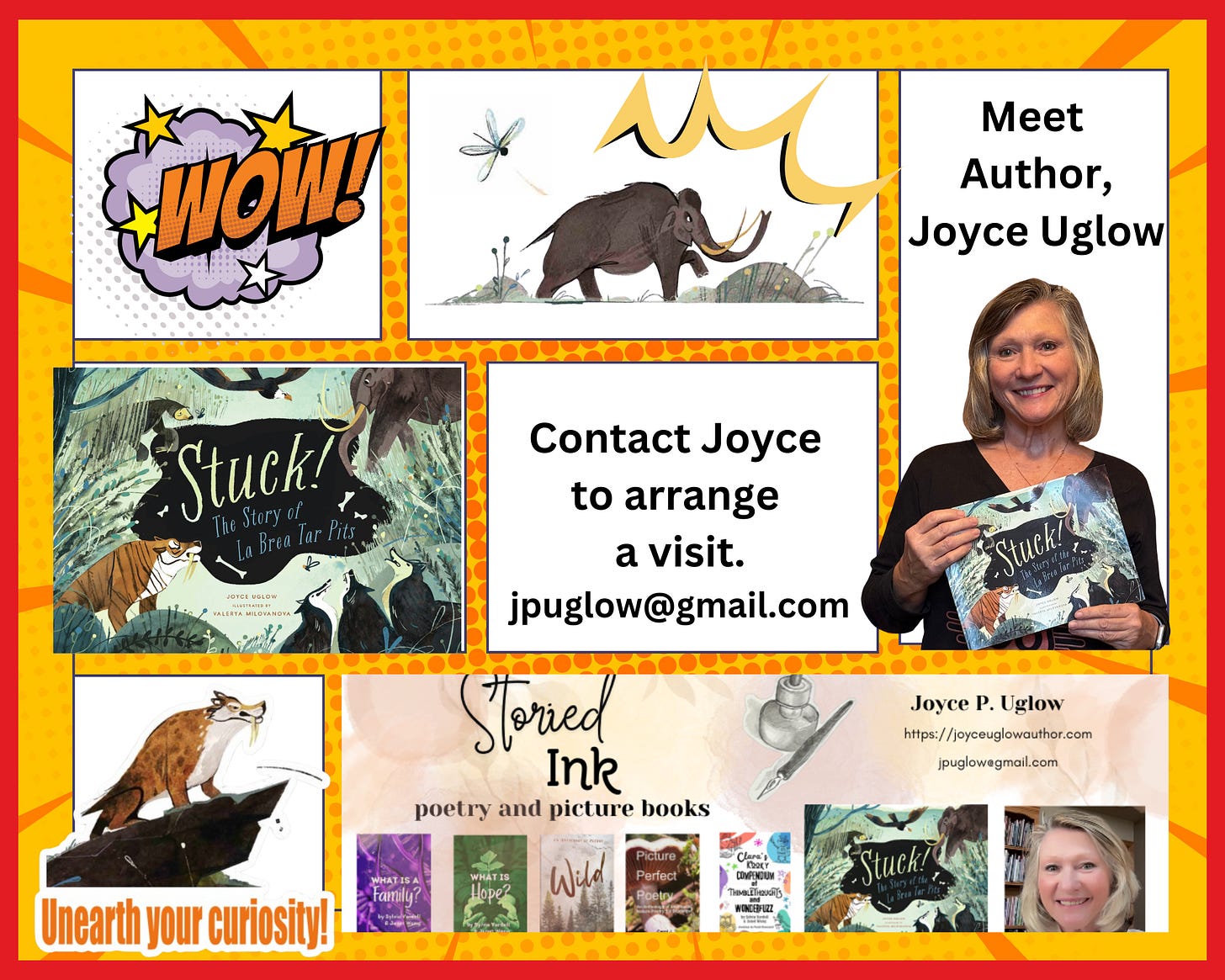mysterious... today's one word prompt
Today, I conclude my portion of the #STUCKBumblebee Challenge with #mysterious and the"IT Factor". Tomorrow, Cindy will post #hibernate, our final one-word prompt on BlueSky and Instagram.
Cindy and I sincerely hope that you enjoyed the 2025 #STUCKBumblebee Challenge. We thank you for joining us in reading, writing, and illustrating our one-word prompts. What started out as a way to spread our book birthday bash, turned into 35 days of a poem-a-day and an exploration of poetry forms.
My SubStack posts included a variety of poetry forms including: Golden Shovel, Skinny, Etheree, Cinquain, and another Cinquain, Cherita, Hide and Seek, Acrostic, Septercet, Mask, Limerick, Pi-ku, Fibonacci, and another Septercet. If you are just now finding this series with this post, click HERE to read the announcement and join in whenever you’d like. Today’s poetry form is an #erasure poem.
Exploring the IT Factor
In my humble opinion, curiosity and exploration are essential in finding the mysterious IT Factor in this writing-for-kids-world.
Lyrical language
Using literary devices such as alliteration, onomatopoeia, similes, metaphors, and word play have their own way of creating a lyrical quality. The language draws readers in and makes the text memorable and shapes a fresh IT Factor voice.
With alliteration, writers use the same letter or sound at the beginning of neighboring words. It helps writing flow and highlights certain thoughts, ideas, and concepts. With onomatopoeia, writers bring sound into the story. It’s a way for readers to engage their senses.
In this gentle touching story about grief and how to heal, generations of a community gather to sustain and enrich each other. Small Things Mended written by Casey W. Robinson, illustrated by Nancy Whitesides, uses scattered alliterative sounds that delivered emotion for me. “He tinkered with tiny gears until Tick Tick Tick a satisfying sound filled the air.” Further into the story we hear the /t/ sound repeats some more. “Cecil took out his tools. He tweaked until PLINK PA-PA PLING a jaunty tune sprang to life.” To avoid a spoiler, please read the book to see its ending, which uses the beautiful /sh/ and /s/ and /t/ sounds. See my review on Goodreads HERE.
In the poetry collection picture book Schoolapalooza, editor Ryan G. Van Cleave puts poetry to work. The /g/ alliteration in Lynne Marie’s poem “Going Global” brings us to geography. “But oh good grief—this cannot be— I haven’t learned geography!” Additional hard /g/ sounds deliver that realization— that gulp! She used words such as grasped, kindergarten, guidelines, glob, topography, and grass. Irene Latham’s poem “Language Lessons” shows readers that “New words taste like lemons…” You’ll want to purchase this one from Bushel and Peck Books!
Imagery Adds to the It Factor
Vivid imagery in picture book text helps readers connect with the emotions being conveyed - without detailed descriptions - leaving room for the illustrator’s IT Factor!
With similes, the words “like” or “as” are used in the comparison. In metaphors, the comparison is direct, without using “like” or “as” in the sentence. These figures of speech help create writing that is more visual and vivid. They help writers deepen the meaning of the words.
The Secret… It’s not very mysterious though!
The secret to success in this new-book-packed-world is…
writing and revising.
(and persistent butt-in-chair writing) My inspiration and passion for writing projects come from giving-it-a-try, curiosity about the world, the It Factor discovered when out and about in the natural world, and reading the world. On April 13, Cindy Mackey posted the one-word prompt #willow. Here is my give-it-a-try-first-draft response on Instagram.
#haiku #willow
wheat grass and willows
sway to the river's music
inspiring me
From STUCK! The Story of La Brea Tar Pits by me - Joyce Uglow, illustrated by Valerya Milovanova, published by Bushel and Peck Books
Harlan’s Ground Sloth lumbered, meandering, making a meal of wheatgrass and willow, wanting a cool drink.
And now on to today’s #erasure #found poem for #mysterious
Erasure poetry, is a form of found poetry. Start with an existing text then black out portions of the text. A brand new new work appears.
I am currently booking author visits for the 2025-2026 school year.













What a fun venture into the world of poetry! Thank you for all the time you put into creating this challenge, Joyce and Cindy - it was engaging and informative.
Cindy, this has been an amazing deep, fun dive into poetry, your process, and writing prompt. Thank you and Cindy so much. All rhe best to your books' success!
Kathy